Stylish Synthesis: In Conversation with ISH
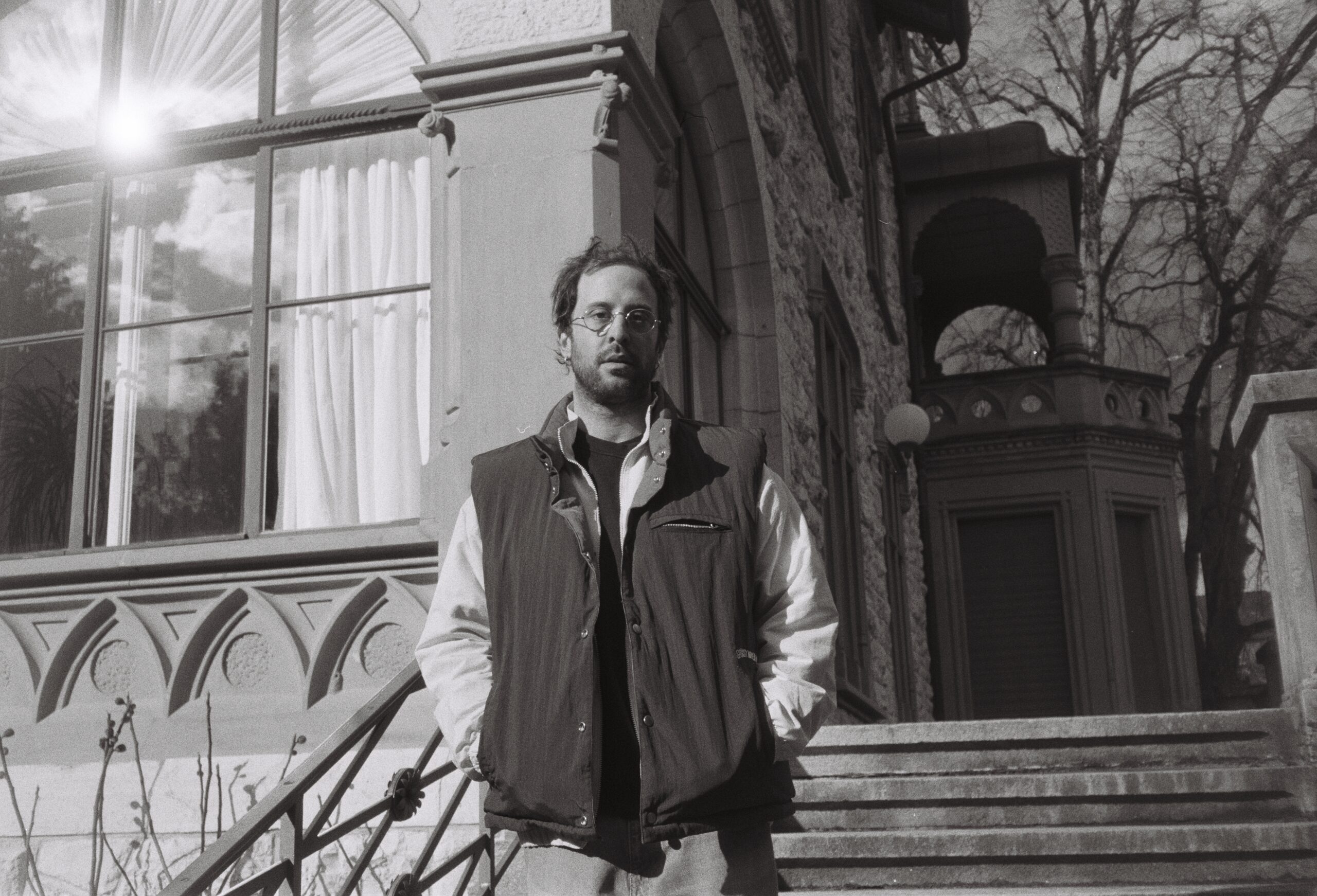
Swiss Tunisian composer, producer and DJ ISH reflects on a live life.
Stylish, bright, and slightly eccentric ISH (real name Ismael Zouaoui) might remind you more of a character from a chemical synthesis documentary rather than about anyone you know. Knowing, befriending, understanding, and accepting Ismael is a sign that your mindset is aligned correctly.
Ahead of his time, ISH feels the impact of refusing to play by the scene’s rules. Fully devoted to his craft, he doesn’t sell out, believing there’s still time to earn respect and recognition for his work without compromising his integrity or soul.
It wasn’t easy to interview this studio hermit, who has isolated himself for the past ten years in music production. As he admitted, what goes on in his head is difficult to express, but even more difficult — to collect.
So, what drives this genius who insists he’s not a genius, but rather a very, very hardworking and curious music producer? Life, work, dreams, style, and friends of Ismael Zouaoui.
Hey Ismael, ready to talk about yourself?
Let’s give it a shot! However, I could improve at communication.
Then I am even more grateful to you for agreeing to this interview. How are you doing in general, and what are you up to today?
Thank you! I’m doing great. I just finished my work and plan to head to the swimming pool after we’re done here. I got some good news today and received copies of my new record!
“Explorer of the Mind”! The cover looks amazing! It fits your tracks so well! How did you feel when you realized you were going to be released on AOP?
The cover is indeed beautiful. The artist had one piece of feedback he wanted from me: Wrapaque (his artist name) asked if looking at this picture gives me the feeling of having acid in my mouth. I think it does.
In overall, everything went smoothly with the release of this EP. It’s not something that happens often. When I was told that Carl H was interested in releasing my work, I was very pleased, though I didn’t yet know how respected his label was among DJs and electronic music fans. When my friends heard I was going to release on Animals on Psychedelics, they reacted very enthusiastically, saying it was a breakthrough. Carl is a great guy, simple and friendly, and I also have a lot of respect for him as a DJ. I feel lucky to be part of this release, and now I have the vinyl in my hands with that mindblowing cover and my three tracks.
Tell me about the tracks, especially the vocal samples.
One of them, “Timewalk,” is quite fresh. The vocal sample that inspired the song came from “Rebirth” by Pigs & Penguins. I loved the voice so much that I asked my friend to make a rip for me since I couldn’t find a good one online. Eventually, I found a clean sample of the word “body” at the very end of the song on YouTube, which I used to create my own version. When I played it for my friend, he actually liked it even more than the original, which was quite funny. A1, “The Mind is A Labyrinth,” is also quite a new song, featuring vocals from Hellraiser: Philip Channard, while operating a brain in front of a class of students: “The mind is a labyrinth, ladies and gentlemen, a puzzle. And while the paths of the brain are plainly visible, its ways deceptively apparent, its destinations are unknown. Its secrets are still secret.” “Humans and Robots,” the B1 which was made in 2021, is sampled from an anime.
That’s great, I love the story behind the samples in tracks; it’s often the most interesting part. I also wanted to ask you something about your live performances. Once we talked about your live-performance setup, and you mentioned you only recently started enjoying the process. Tell us more, what changed?
True, I completely rethought my live setup about a year ago. For many years, I mostly performed with the Elektron Octatrack paired with an Analog 4 and one or two extra machines which kept changing, and after a while, I got tired and bored of this setup. I enjoyed creating rather than performing. Coming from DJing, I wanted to improvise in real-time, play with track combinations, and change the tempo. I’m also not a big fan of tweaking the synthesizers during live shows in my club sets.
So, I started researching new technologies and chose a setup with a couple of Blackbox samplers and a MIDI controller. Switching to it took a few months, but it was worth it. For example, with the Blackbox, I can store an almost infinite number of tracks, easily switch between projects, and change the pitch of stems. Now the process has become truly engaging; I’m focused on creating a story, not just replaying my tracks. Moreover, it’s a fully portable micro-setup that takes up very little space. I’m loving it.
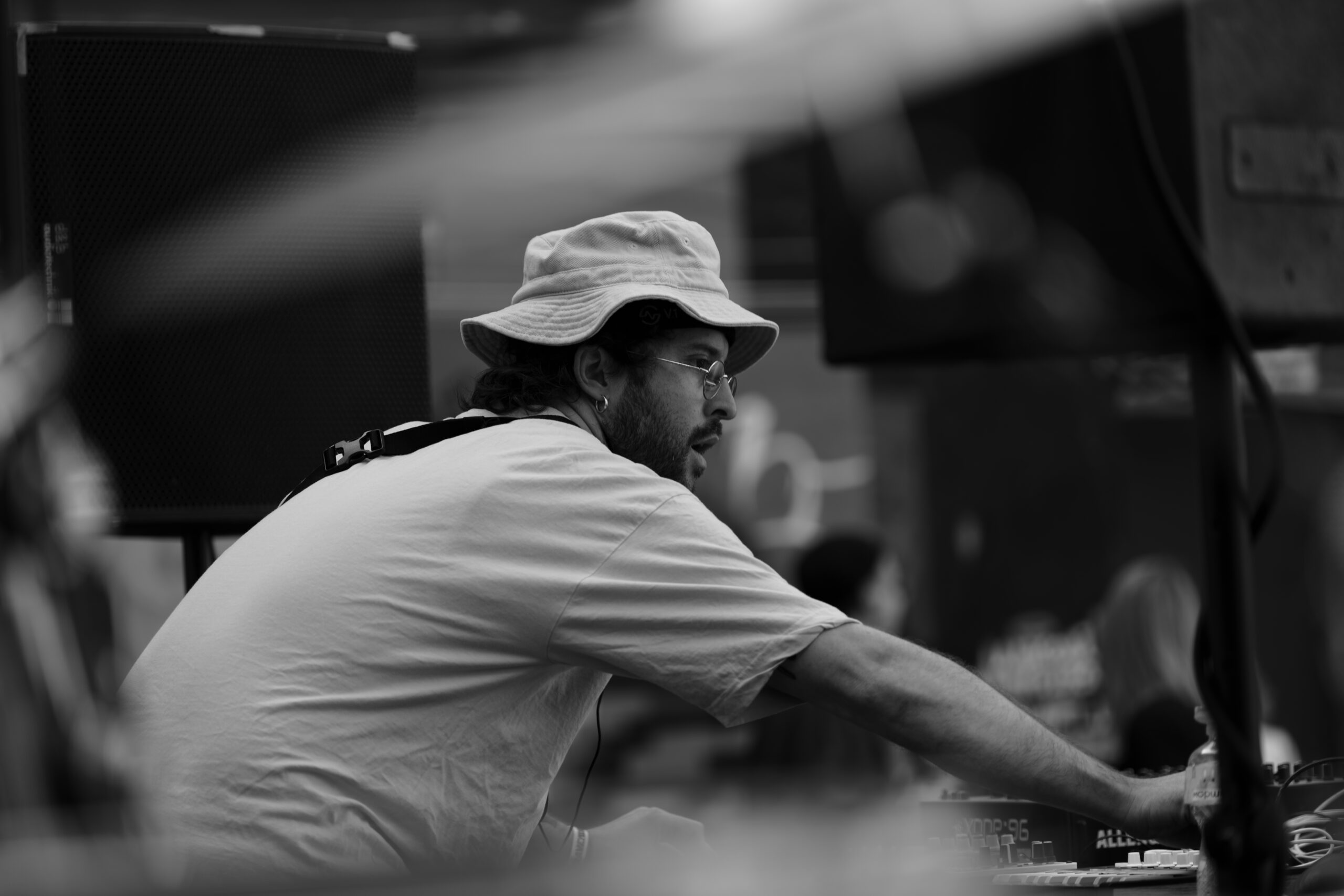
How smoothly is the integration and interaction of the new setup going? You always look pretty chill during live sets. Have you ever had to fix bugs on the fly?
Well, sometimes an artist looks calm and confident, but inside they’re freaking out trying to solve a problem. I’m sure every live performer has had a moment when something went wrong: accidentally pressing the wrong button, a cable failing, and so on.
Recently, I played at the Stritchka Festival in Kyiv on a big outdoor stage in front of 800 people. The DJ before me was finishing up, and I was setting up, confident everything was fine since I had practised for an hour in the festival studio, and everything was perfect. But then one of the touchscreens on my Blackbox stopped working, and I thought I was going to die — there were only 20 minutes left before my set. I just started trying every method I could think of, and one of them worked. Two minutes before the start of my live set. It was a good gig, though I didn’t relax immediately.
Another time, during a live performance, I realised my MIDI clock wasn’t working, so I couldn’t beat-match the tracks (stems). I was playing each of the tracks, pushing buttons repeatedly, and it almost worked but not perfectly. I had to be very creative with transitions so no one noticed I was struggling.
From the outside, it might not be obvious that an artist is in agony because at that moment, they’re very focused, and it looks natural. And if they’re professional, they also manage to keep everything sounding top-notch, so no one even suspects something is wrong.
As a Kind Des Geistes, you’re performing and creating music with the help of a brainwave device. Can you explain in simple words how it works?
Usually, no one gets it until they try it out. But I’ll try to explain. So, the electrodes attached to the headband I wear, measure my brain waves, which are visualized through software. This brainwave data is converted into MIDI, allowing me to play my synthesisers. Beforehand, for example with an VST like Omnisphere, I am creating a “sound picture” — a few sounds that come together in a song. I never know exactly how it will turn out, so I produce it in a way that ensures everything works well together.
Utilizing the brainwave device (Neuroflexion), I have to filter a lot of information — deciding what can come in, how much, how often it can play, and what it’s controlling. Essentially, my brain plays melodies on my synths, where the sound design is already done, and I make the live arrangement. So, I play together with my brain, using effects and live automation. If my brain isn’t playing at the perfect moment, I adjust by taking the sound out.
I also recently got a video synthesizer, so now I can add visualizations to my performances, which I control on the fly. This live set always blows people away because they can’t figure out what’s happening. The first album under KDG, created with a brainwave device, is coming out on Childhood Intelligence very soon, along with a documentary about it.
“Sometimes an artist looks calm and confident, but inside they’re freaking out trying to solve a problem.”
What is the perfect place for KDG live sets?
It’s an A/V show, mostly experimental ambient and downtempo music, ideal for experimental or chillout stages at festivals or as an opening concert for a big event or festival.
Can you highlight some of the other projects you are working on now?
There are a few. One of them is “Aether” — an experimental music daytime event that I run together with Gwenan and Eli Vervien a couple of times a year. One can have a proper mind and sound trip while lying on the carpet and pillows at our cosy “homie place” at MaHalla. The event focuses on experimental chillout live and DJ sets, alongside video and dance performances, vegetarian food, and more. The audience is very nice, and although it is not yet profitable, there are more and more people interested.
I’m also making two cool collaborative releases under a new alias “Collective Brain”. One is an EP with rap vocalists for the Bulgarian label “Very Important Sounds.” The other is an album I’m curating and producing, featuring talented musicians I’ve been lucky to get to know over the years, like Daniel Schroeteler, an mind blowing drummer, Dariuz Vultra, an amazing guitarist and singer, Selassie and Jensus Krasnik to name a few. I’m excited to see how it all will turn out!
Finally, I started my Bandcamp label, “The Holographic Universe,” where I’m releasing music from my archive of — essentially a diary of my production. I’ll also be putting out new tracks there. I just needed to finally let those hundreds of babies I created in the studio over many years out into the world.
How many tracks do you have?
Oof, I think over 1500 finished tracks, not including songs I made for live.
Wow. That is quite a number. You are calling yourself a music nerd. Can you describe an average day in the studio during your most productive nerdy months?
Sure! Let’s say I work in the studio four to five days a week. I prefer to wake up at 8 a.m., have a quick breakfast, and be in the studio by 9 a.m. It’s a half an hour’s bike ride. There, I spend my day making music or doing other tasks like mixing/mastering/cover design for “The Holographic Universe,” working on mixing jobs for clients, managing releases, and communicating with labels until 5 to 7 p.m. Even after leaving the studio, the work continues at home. I might respond to emails or write funding applications. I also use this time for tasks that don’t require the studio, such as digging for music and creating playlists for the labels.
And you have free out-of-work time, don’t you?
I do! However, even then I keep thinking of music and my projects (laughing). But yeah, I enjoy watching anime, reading books, smoking a joint, and relaxing while listening to chill music. I also enjoy cooking for others. In the summer, I love swimming, and being in the water — it’s my thing, and I did it every day before I moved to Berlin.
Nearby the apartment, there’s a brewery with its beer garden where I can enjoy their fresh beer with friends. On Thursdays, there is a free live stand-up comedy, which is a nice bonus.
Parties — free time or job?
Haha, if the music is not my cup of tea — job.
To make music — work or fun?
It’s work, but I am having fun doing it. People often have a negative association with work, seeing it as suffering. But work can be fun. If I didn’t call it “work”, some might think I am just piss-farting around.
If it’s a job, does it satisfy you financially? How much money do you earn on your releases?
The earnings vary depending on the label. Typically, labels pay around 150 euros per track. Some contracts are also so twisted that you can’t be even sure that you will get anything in the end. Some labels are very fair, while others exploit artists for profit and don’t care about them. In the end, the good producers will turn away from those labels. So the answer is “no”, it doesn’t satisfy me financially. Not yet.
I am still curious, how do you survive?
Five years ago, I was working nonstop: a restaurant job in addition to the studio. But for the last two years, I went to do a winter season in Switzerland as a waiter, which supports me during the rest of the year. It would be wonderful to focus on music and not have to take on another job. And I am on it.
With proper DJ/live performances, there is a bigger opportunity to earn money. What do you think about the scene, though?
It would be great if the scene were a bit fairer. Artists, whose skills and professionalism can truly provide guests with real experiences and emotions, wouldn’t have to think about engagement metrics on Instagram or TikTok, or run around at promoters’ parties and sell faces, kissing asses. I don’t have time for that, and I hope that one day, my production will do everything for me. In any case, I won’t stop making music, though I would like to play more often.
You have an interesting DJing technique, you set the mood and don’t limit yourself to genres. You can start with an intro track right after a peak, and everything still sounds and feels harmonious, and deeply engaging (more than anyone’s Instagram story). What drives you — confidence in yourself and your skills or the crowd?
Thank you, I can explain my passion for playing intros. I’m very into early Goa-trance, and back in the day in Goa tracks were often played using DAT tapes, which one couldn’t beat in the early days. To compensate, producers put a lot of effort into creating complex intros and outros to facilitate smoother transitions between tracks. They are beautiful, and I’m happy to share those tracks in full with the dance floor.
I play all kinds of music; it can be techno, house or Bass, breaks, trance, and chill out. And I produce in different styles and genres from ambient to drum’n’bass in the same way.
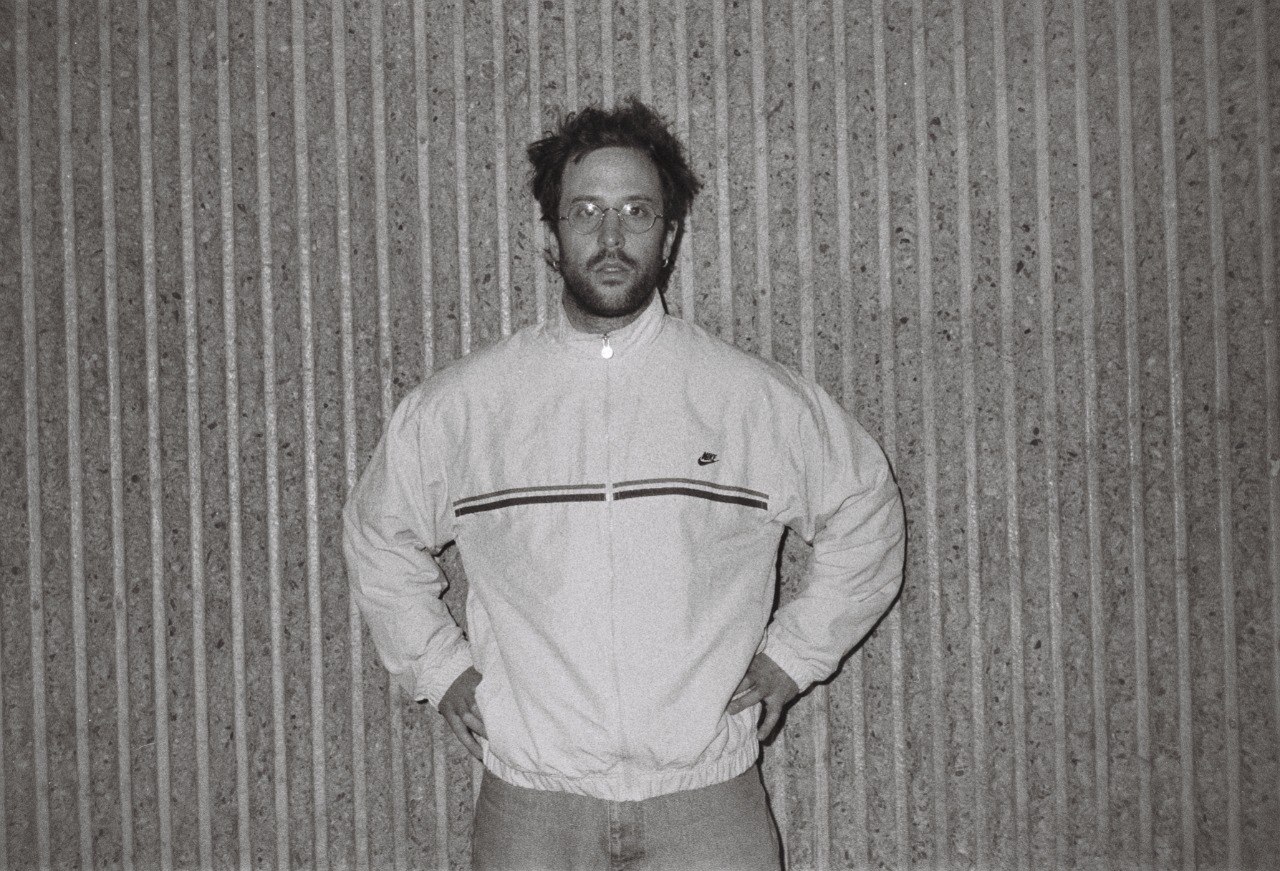
Name just three genres you would pick to describe ISH’s sound.
Drum N Bass, Techno-Trance, Chillout.
That’s already four!
No, just two. (giggling) I said “Techno-Trance.” Okay, then trance, drum’n’bass, and chill out.
Do you set yourself a goal to make your genre? Like ISH techno? I can say I recognize your signature when listening to your production.
That’s not a goal. A former studio colleague and I came up with the term “Post-genre” for everything that doesn’t fit into any other genre descriptions. So now, I use #postgenre for all of my release descriptions.
How is it to be a white male DJ these days? (smirks)
Haha! It’s probably the worst time for white male producers. But actually, I am BIPOC, though it’s hard to tell.
Tunisian roots! But, does the Tunisian electronic scene recognize you?
Swiss — also not. (laughing)
What about the Swiss scene? When was the last time you felt like you were a part of it?
Almost eight years ago, I moved to Berlin from Baden in Switzerland. For the first few years, I was still playing there quite often. Since then, many venues that were booking me got closed or reorganised, and obviously, I was not active in the local electronic music circle, so I started playing there rarely. When I visit home, I try to organise a gig.
Some of the most epic Swiss underground music projects.
Easy. Sihl Records is my favourite record store in Zurich, run by Andreas, a vinyl collector, DJ, and just the coolest owner you can imagine. As you walk in — he’s probably there, behind the bar, excitedly telling customers his unlimited crazy stories. There’s always a chill vibe and a great selection of records. I always meet a bunch of friends there, also a nice bonus..
Mikro in Zurich, a space curated by my friends from Les Points, is actually a garage in the backyard of their studio. They started more than 10 years ago by throwing raves and organizing concerts, which have deeply shaped the electronic music scene and the new generation in Zürich. They also curate art exhibitions — the last one was about Spiral Tribe, which I unfortunately missed. The highlight every year is their “Speedparade” rave during Street Parade, which usually lasts for three days.
Kapitel (or Kapitel Bollwerk) — it’s a club in Bern, but during the day it’s also a restaurant with delicious food. I’ve been there and played a couple of times. I love everything about this place: they have two dance floors, and the “Space Floor” is one of the cosiest places I’ve ever played or danced. It’s just perfect. But even better are their crew and owners, amazing people. Right now, they’ve launched a fundraiser. I hope they find a lot of supporters and can continue operating without any problems.
And also the D.A.S. underground collective. They have a Telegram group. It’s my friends who have a very cool off-location in Zurich, and they are having conceptual parties. For one of the events I played at, they made an opening concert and invited a live duo — two Swiss electronic music pioneers and crazy legends, Bruno Spoerri and Marco Repetto. Imagine, one of them was already 85 when he was performing at that party! I hope he is still alive. Anyway, D.A.S. events are always conceptual and unique.
Let the reader’s imagination travel into your studio. What will they see?
A lot of dust! (Laughing) But yeah, that’s something you find as a norm there. But I’ll start over with the good sides. I was happy to find my studio. It’s beautiful, and I would live there if I could. It’s in a space called MaHalla, in Schöneweide (Berlin), next to the Spree-riverfront. It is 40 square meter with 4- meter ceilings and a panorama window over the wall. There is a DJ place on one side of it and a production suite on the opposite. A couch so I can stay overnight, of course, rugs, and a lot of plants. It’s very cosy.
The space was already acoustically treated well before I moved in, it was used once for something connected to a philharmonic recording.
How did you find it?
It was not a regular way of location scouting. Five years ago, I was helping to renovate the project Mahalla, which I have mentioned several times previously. Now it’s time to explain what it is.
Here is a quote from an article about it: “The architectural jewel with 9,000 m² of event space and a ceiling height of 18 meters is still known to many locals as the former Elektropolis showroom. It once served AEG as an exhibition space for large turbines and also inspired Fritz Lang for his famous film ‘Metropolis.'”
About five years ago, Ralf Schmerberg, a successful and incredibly talented photographer and filmmaker, took over the lease for a space and named it MaHalla. While I was assisting with the project, and helping renovate MaHalla, I discovered this space and had to get it befor anyone else did. i´m renting it as my studio ever since.
In MaHalla I always meet interesting people, and there are always artsy things happening that, while not directly related to what I’m doing, are still very inspiring. Berlin Art Week, food and fashion shows, exhibitions, some weird private gatherings with crazy decorations, Shootings, raves, experimental music events and so on. Ralf takes a good care and developes this place and community around.
You love stylish and interesting gatherings. Tell me about your style. What are you wearing these days? Where do you shop?
Now I’m wearing a T-shirt with the inscription “Traum Tennis, Traum Tennis Tunisia” (Tennis Dream, Dream Tennis Tunisia). I have a lot of these in different colours. They’ve appeared in photos and videos from my various performances. My father was a tennis trainer and organised tennis holidays in Tunisia, and my mom designed these T-shirts about 30 years ago using a very old-school design program. 25 years later, I found a box full of these shirts in all varieties of colours, so I wear them all the time. I love them a lot.
The cap, “Forever Stoned,” which is from a small Georgian brand, was a gift from my good friend Zaza. The corduroy shorts are from a secondhand shop, and the Nike sneakers are a very high-quality replica. I’m not shy about ordering reps of certain brands. I love designs from brands like Prada, Balenciaga, or Vetements, but I can’t justify spending 1200 euros on a shirt, so I get replicas instead. For me, it’s all about enjoying the designs without breaking the bank.
I buy most of my clothes from secondhand shops. Occasionally, I get merchandise from a label, or I’ll wear an old sweater or vest from my dad. He always has interesting clothes, though I don’t know where he finds them. I rarely go shopping, but when I do, it’s usually vintage shops or local brands stores.
Can you suggest a couple of local brands?
I recently picked up some great pieces from Ukrainian Print Resistance and The Riot Division. The latter is a high-quality brand with really well-designed tactical clothing. I also love Kuboraum for their insanely designed sunglasses. If you saw my suit for the last Strichka Festival — my friend Max Brüggemann made it for me. He doesn’t have a brand yet — he’s studying sustainable fashion at a university in Berlin and he makes cool clothes and bags out of recycled materials.
Tell me about your family.
My mom is Swiss, and my dad is Tunisian. They met while studying in Marseille, and he moved to Switzerland when he was 30. Then I was born, followed by my younger brother Khalil and my sister Malika. They all still live in Switzerland, while my dad travels back and forth between Tunisia and Switzerland.
What does your mom do?
She’s a mom and a teacher for difficult children and young adults. Both my parents are semi-retired now. My mom still works 3 days a week, and my dad is involved in various businesses and trading, tunisian style.
What is your dream, Ismael?
My dream is to have a nice house where I live with my girlfriend. It has a studio and a garden, preferably not far from a beach or a lake or river where I can swim.
What is love?
Baby don’t hurt me (singing, then — laughing). Maybe it’s something unconditional, something you can’t fully grasp but for which you’d do everything.


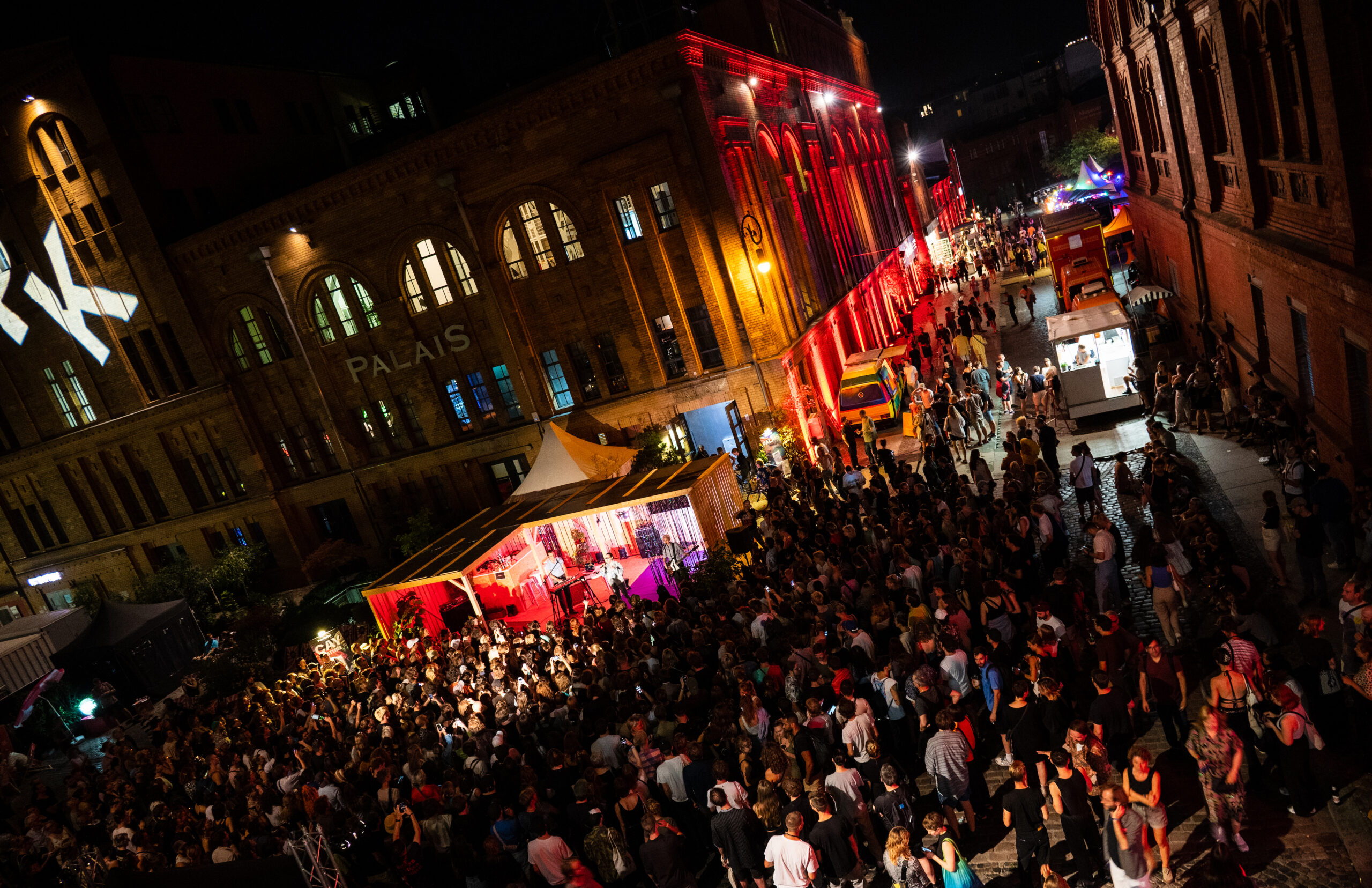
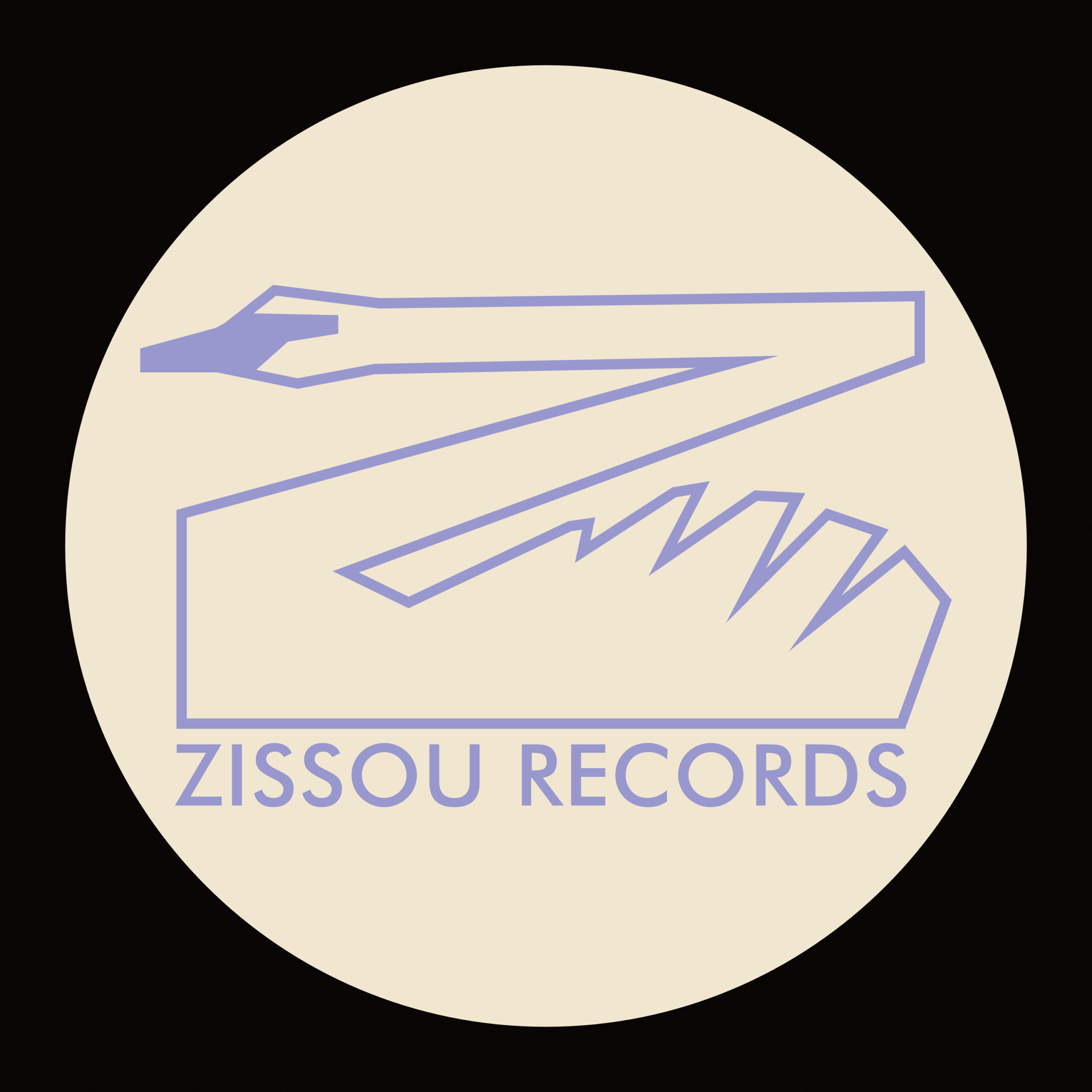
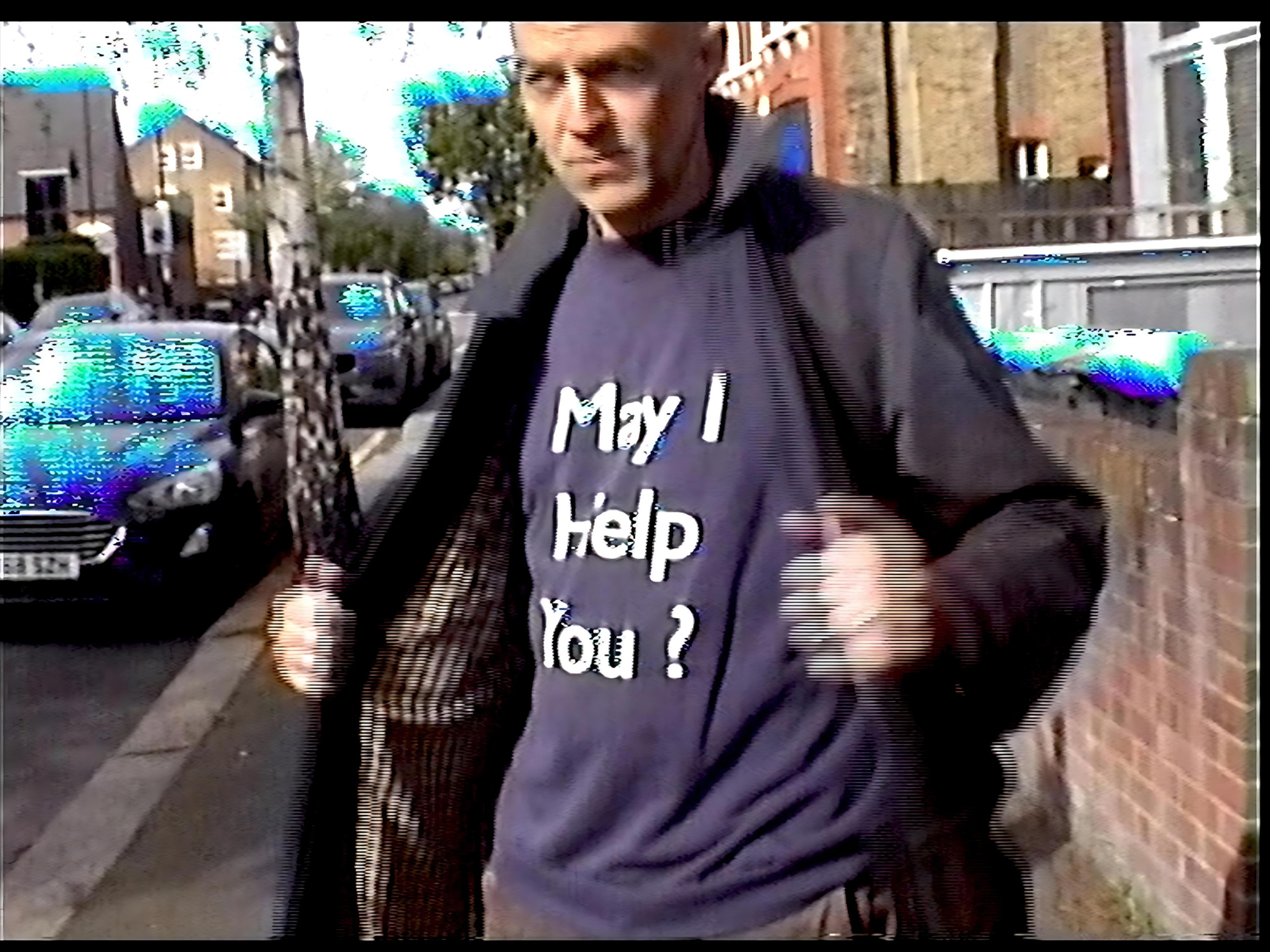











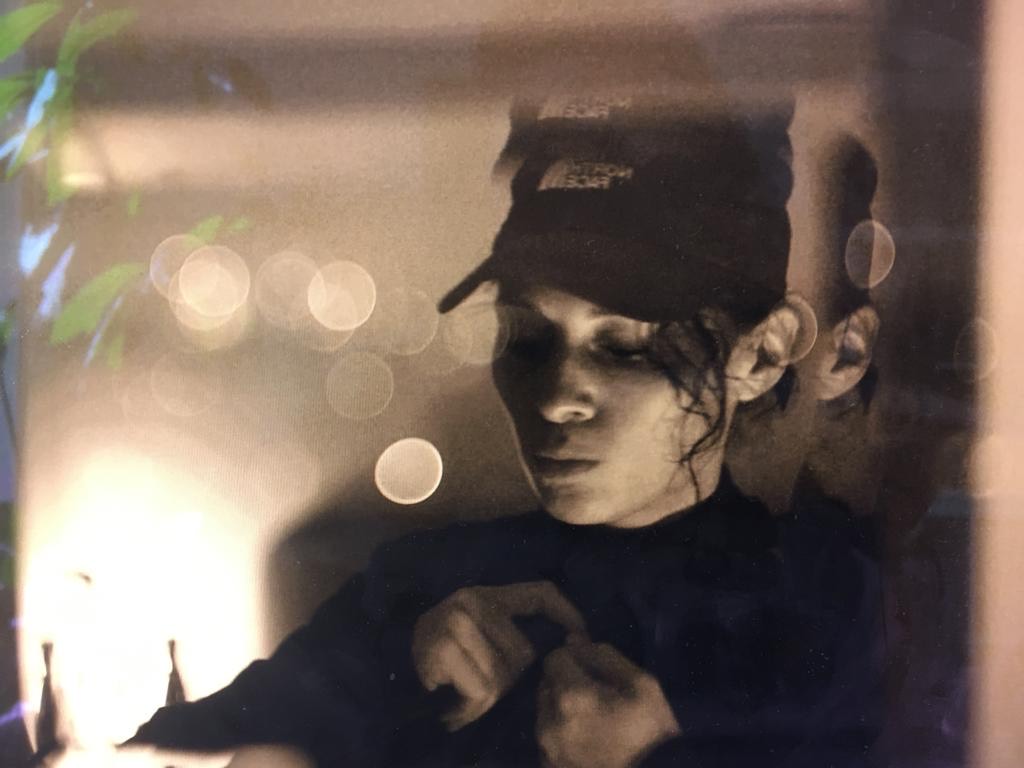
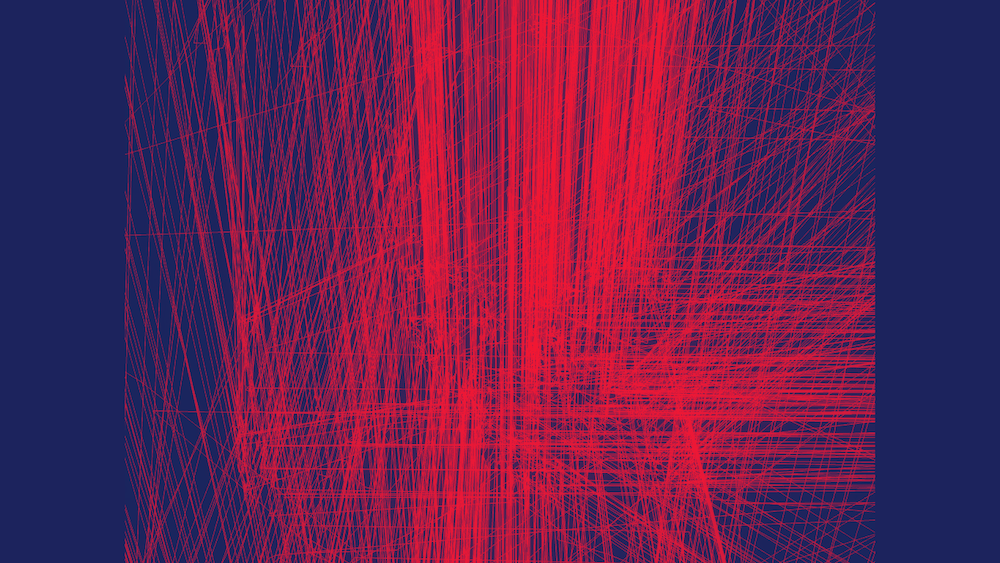



Must Reads
David Holmes – Humanity As An Act Of Resistance in three chapters
As a nation, the Irish have always had a profound relationship with the people of Palestine
Rotterdam – A City which Bounces Back
The Dutch city is in a state of constant revival
Going Remote.
Home swapping as a lifestyle choice
Trending track
Vels d’Èter
Glass Isle
Shop NowDreaming
Timothy Clerkin
Shop Now